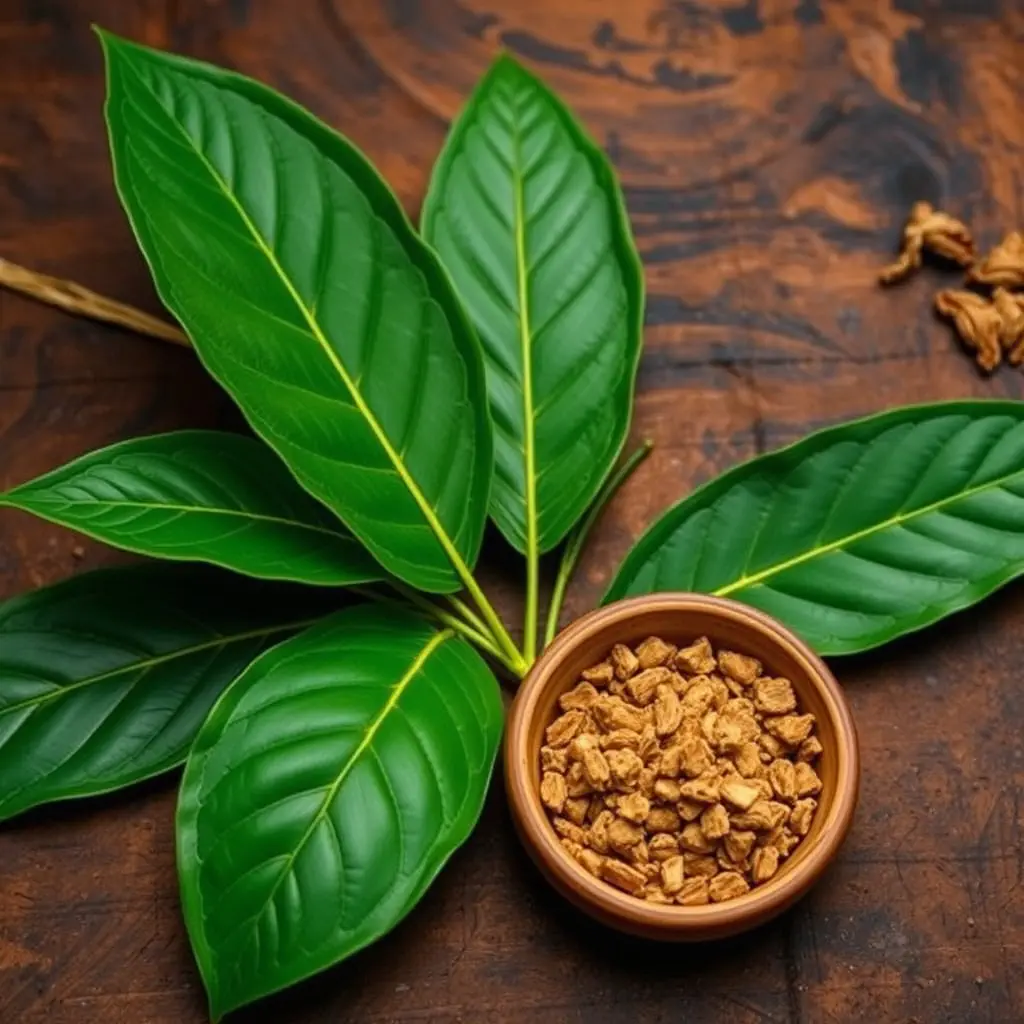Kratom, derived from Mitragyna speciosa leaves, is under scrutiny in the aviation industry for its potential to improve wellbeing and manage pain among flight crew members, who face high cognitive and physical demands. Its analgesic properties offer a non-opioid alternative for chronic pain management, which could be particularly beneficial for preventing musculoskeletal injuries common in pilots and aircrew due to the physical stresses of flying. However, its inclusion in aviation health protocols requires careful evaluation, as kratom contains opioid-like metabolites that can result in positive drug tests, conflicting with strict industry substance policies. The exploration of kratom's potential must be balanced with establishing safe usage guidelines, including dosage and timing, to avoid impairing cognitive abilities or motor skills. Research is ongoing, but until clear guidelines are established, aviation professionals interested in kratom should consult medical experts and adhere to safety standards. Additionally, when transporting kratom as part of air travel, it's essential to understand the legal status of the substance across different countries and comply with both international drug agreements and domestic laws. Travelers should declare and pack their kratom correctly, typically in checked luggage, and follow the TSA's guidelines to avoid issues during security screenings. Always verify airline policies on kratom to ensure a smooth journey.
Exploring the intersection of herbal supplements and aviation safety, this article delves into the potential of kratom in injury prevention and management for aviation professionals. Kratom, a plant-based substance known for its various effects on pain and energy levels, may offer benefits to flight crews who face demanding physical and psychological demands. As we navigate through the nuances of incorporating kratom into their routines while adhering to stringent airline policies and regulations, this piece aims to shed light on responsible use protocols that could enhance the physical well-being of these dedicated individuals. Understanding its role in injury prevention and management is crucial for aviation professionals who “fly with kratom” to ensure their well-being and the safety of their flights.
- Understanding Kratom's Role in Injury Prevention and Management for Aviation Professionals
- Implementing Kratom Use Responsibly to Enhance Physical Well-being Among Flight Crew
- Navigating Airline Policies and Regulations When Flying with Kratom
Understanding Kratom's Role in Injury Prevention and Management for Aviation Professionals

Kratom, a plant-based substance derived from the leaves of Mitragyna speciosa, has garnered attention within various sectors for its potential impact on wellbeing and pain management. Aviation professionals, who must maintain peak cognitive and physical performance to ensure safety and efficiency in their roles, can benefit from kratom’s analgesic properties. Its ability to alleviate chronic pain without the debilitating side effects of opioids makes it a compelling option for individuals whose jobs demand consistent, high-level functioning. Moreover, by reducing the prevalence of musculoskeletal disorders, which are common among pilots and aircrew due to the physical demands of flying, kratom can play a role in long-term injury prevention.
The integration of kratom into the health and safety protocols for aviation professionals must be approached with caution and within regulatory frameworks. It is crucial to understand that while kratom may aid in pain management and potentially prevent injuries associated with the physical stresses of flying, its effects should be carefully monitored. The aviation industry’s stringent drug policies necessitate a thorough examination of kratom’s presence on flight crew drug tests, as it can produce positive results for opioid metabolites. Ensuring that the use of kratom does not impair cognitive function or coordination is paramount to maintain safety standards in aviation. Ongoing research and clear guidelines are essential to determine safe dosages and usage patterns for aviation professionals considering kratom as part of their injury prevention and management strategies.
Implementing Kratom Use Responsibly to Enhance Physical Well-being Among Flight Crew

Integrating Kratom into flight crew health protocols can be a strategic approach to enhance physical well-being and support injury prevention and management. Kratom, a natural plant supplement derived from Mitragyna speciosa, is known for its potential effects on pain relief and energy conservation, which are beneficial for individuals in physically demanding professions like aviation. When flying with kratom, it is imperative to adhere to strict guidelines and regulations governing its use in the workplace. Proper dosage and timing are critical to ensure that kratom’s benefits are realized without impairing the crew’s cognitive functions or violating aviation regulations.
A responsible Kratom regimen for flight crews must be carefully designed, taking into account the unique demands of their work environment. The use of kratom should be accompanied by comprehensive training and clear protocols that address both its positive contributions to physical health and the potential risks associated with its misuse. By implementing such a program, airlines can potentially reduce the incidence of work-related injuries and improve overall job performance and satisfaction among their flight crews. This responsible approach to integrating kratom into flight crew wellness programs underscores the importance of evidence-based practices and adherence to safety standards in aviation.
Navigating Airline Policies and Regulations When Flying with Kratom

When considering air travel with kratom, it’s crucial to be well-versed in the evolving policies and regulations governing its transport. Kratom is a botanical substance that has gained popularity for various uses, including as a natural supplement or dietary aid. However, its status under international drug conventions and domestic laws can vary, leading to different interpretations by airlines and airport authorities worldwide. Passengers planning to fly with kratom must first ascertain the legal status of the substance in both their departure and destination countries, as well as in any transit locations, to avoid potential legal issues upon arrival.
A key aspect when flying with kratom is understanding that it falls under controlled substances in several jurisdictions. As such, it’s subject to strict transportation regulations similar to other controlled substances. The Transportation Security Administration (TSA) in the United States allows passengers to travel with kratom but emphasizes that it must be declared and packed appropriately, typically in checked luggage. It’s essential to package kratom properly to prevent any powder from spreading during the screening process. Additionally, always check with your specific airline ahead of time, as their policies can differ, and they may have additional requirements or restrictions. By carefully planning and adhering to these guidelines, you can ensure a smoother journey through airport security while traveling with kratom.
In conclusion, the potential of kratom in injury prevention and management, particularly for aviation professionals, presents a compelling area of research. The responsible implementation of kratom can significantly enhance the physical well-being of flight crews, offering a natural alternative to manage pain and fatigue associated with their demanding roles. However, navigating airline policies and regulations when flying with kratom requires careful consideration to ensure compliance and safety. As the aviation industry continues to explore the benefits and risks associated with kratom use, it is clear that a nuanced approach is essential for integrating this substance into professional practices responsibly. Further research and clear guidelines are needed to optimize kratom’s role in enhancing the health and performance of aviation personnel while maintaining the highest standards of safety in the skies.






